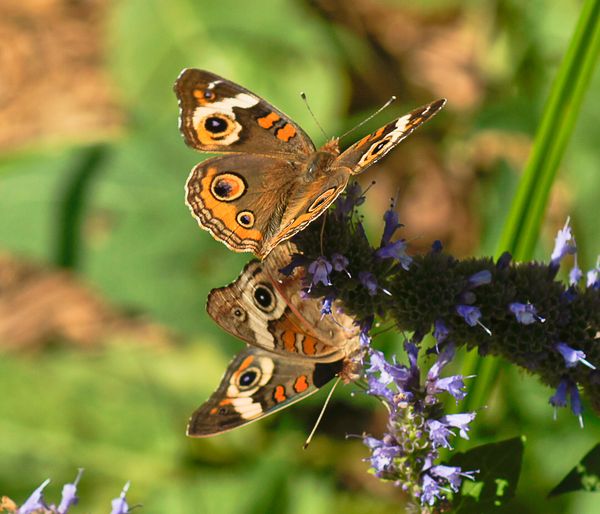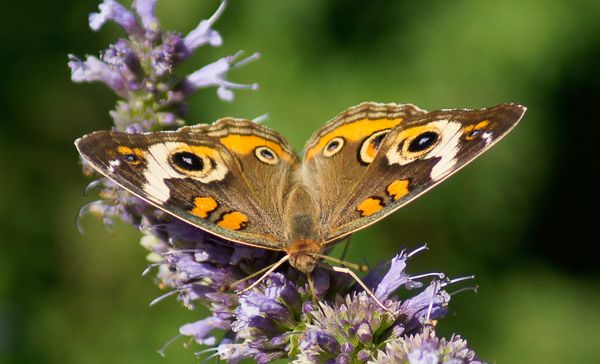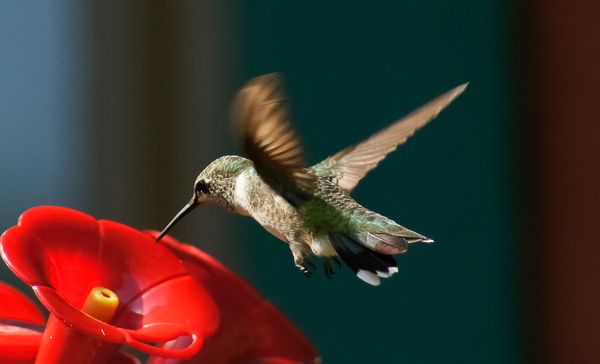More test shots from the new camera
Sep 14, 2011 02:59:27 #
I shot these yesterday. What do you think? I was using a 300mm telephoto lens on all of them.
They were all over. F 6.3 @ 500/sec. ISO 100

Up close. F5.6 @ 3200/sec. ISO 800

I like her tail feathers. F 5.6 @ 2000/sec. ISO 800

Sep 14, 2011 07:17:57 #
wow those butterflies are gorgeous! why such a difference in the ISO setting with them though? Did you change that manually? If so why? Sorry for the questions, the first one would have to be my favorite though! Fantastic pics! (also the bird is very very cute!!)
Sep 14, 2011 12:48:22 #
manna wrote:
Oh, you did not know. I just got the camera last Thursday. I am doing just that; experimenting with the settings is all. I usually do shoot in manual.wow those butterflies are gorgeous! why such a difference in the ISO setting with them though? Did you change that manually? If so why? Sorry for the questions, the first one would have to be my favorite though! Fantastic pics! (also the bird is very very cute!!)
Sep 14, 2011 13:10:05 #
manna wrote:
wow those butterflies are gorgeous! why such a difference in the ISO setting with them though? Did you change that manually? If so why? Sorry for the questions, the first one would have to be my favorite though! Fantastic pics! (also the bird is very very cute!!)
Those super fast shots at 1/3200 and 1/2000 would have needed a high ISO to compensate for the lack of light in a fast shot unless the ambient light was very strong which does not look to be the case.
My rule of thumb for these setting, the BIG THREE is:
1. Decide if I want to control DOF (depth of field) or blur (shutter speed) or both. If I want a large DOF I need a high F stop like f/11 or better. If I want to stop motion, I need (depending) a high speed like 1/500 for kids, 1/1000 for athletes and wild animals, 1/3000 or better for the really fast stuff like helicopter blades. 1/3000 would probably have frozen the hummy's wings in the above photo HOWEVER, you may well want to see some blur as in the hummy photo as it lends a sense of motion or movement and a better exposure.
Then, if I have my F stop for a wide DOF (like an F/16 or f/22) and a speed to freeze motion (like a 1/1000) then the exposure may not be possible - not enough light. In that case, and only then will I adjust the ISO. In the above example, I am short on enough light cause my aperture is necked down to a small opening and the speed is fast further limiting the amount of light hitting the sensor. So, a higher ISO, like maybe ISO 1500-2000 should work. Too much ISO and the digital exposure will get too grainy (pixelated, sandy looking). I normally expose for an ISO of 400 for most stuff. 100 is great for outdoor, lots of light (no grain at all) up to 800 for flash-less indoor stuff like weddings (grain is not a problem if you have a relative high megapixel count camera like at least an 8 or 10 megapixel and are max'ing the resolution of each shot, and you are not intending to blow up print past about an 11' X 16'. That equates to a jpeg resolution of 4,928 × 3,264 pix printed at a printer resolution of 300 dpi (dots per inch). If your camera has a RAW setting for the resolution and you are willing to use post-production processing Photoshop of GIMP (free), then you will always get the best possible shot with the least grain possible for the F stop, speed and ISO settings.
TMI - sorry ;-)
All that said, all cameras are a bit different and you just need to take a lot of shots at different settings comparing the results until you have a firm grasp on what does what.
Mike...
Sep 14, 2011 18:13:28 #
Sep 15, 2011 01:29:47 #
wmralls wrote:
I really liked your explanation of aperture vs. ISO. All beginners should read this and jot down some notes. Humming birds are a great way to experiment. I have only just begun. I don't quite have the feel of it yet like I do with my a500. The problem I have is that I work 12 hour days and I only have a few minutes at a time to play with it each day. And on the weekends, well, there are the honey do's. That really crimps my style. quote=manna wow those butterflies are gorgeous! w... (show quote)
Sep 15, 2011 04:09:11 #
i really like your explanation mike! very easy to understand, going to take tainkc's advice and write it down for future reference!
If you want to reply, then register here. Registration is free and your account is created instantly, so you can post right away.



